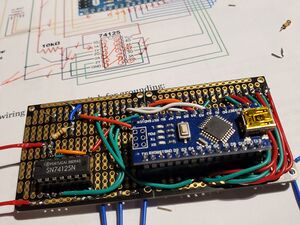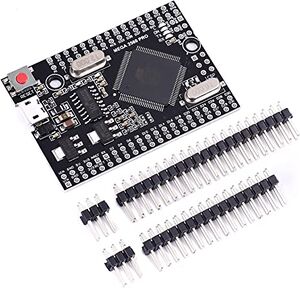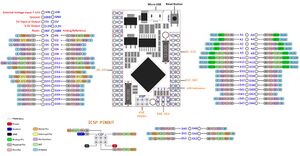RPU Hardware Revisions: Difference between revisions
(Created page with "= BSOS Hardware Revisions = Interfacing the Arduino to the MPU is done using the J5 connector on the board. The J5 connector is at the top of the board and it was originally meant as a diagnostic port. It contains access to all the lines needed except for the IRQ line on the original MPU's. thumb|Arduino Mega 2560 Pro thumb|Arduino Mega 2560 Pro Pinout The hardware interface board has gone through several revis...") |
No edit summary |
||
| Line 1: | Line 1: | ||
= BSOS Hardware Revisions = | = BSOS Hardware Revisions = | ||
Interfacing the Arduino to the MPU is done using the J5 connector on the board. The J5 connector is at the top of the board and it was originally meant as a diagnostic port. It contains access to all the lines needed except for the IRQ line on the original MPU's. | Interfacing the Arduino to the MPU is done using the J5 connector on the board. The J5 connector is at the top of the board and it was originally meant as a diagnostic port. It contains access to all the lines needed except for the IRQ line on the original MPU's. | ||
The hardware interface board has gone through several revisions. The original version interfaced with an Arduino Nano, though due to program space limitations and the need for additional pins current versions use the Arduino Mega 2560 Pro. | |||
[[File:Ardino-board01.jpg|thumb|Early BSOS Prototype]] | |||
== Early Prototypes == | |||
The earliest versions of the BSOS system were based on breadboards - manual versions of what would eventually become Version 1. | |||
[[File:Mega2560 Pro.jpg|thumb|Arduino Mega 2560 Pro]] | [[File:Mega2560 Pro.jpg|thumb|Arduino Mega 2560 Pro]] | ||
[[File:Mega-2560-Pro-Pinout.jpg|thumb|Arduino Mega 2560 Pro Pinout]] | [[File:Mega-2560-Pro-Pinout.jpg|thumb|Arduino Mega 2560 Pro Pinout]] | ||
== Version 1 == | == Version 1 == | ||
Revision as of 17:51, 3 December 2022
BSOS Hardware Revisions
Interfacing the Arduino to the MPU is done using the J5 connector on the board. The J5 connector is at the top of the board and it was originally meant as a diagnostic port. It contains access to all the lines needed except for the IRQ line on the original MPU's.
The hardware interface board has gone through several revisions. The original version interfaced with an Arduino Nano, though due to program space limitations and the need for additional pins current versions use the Arduino Mega 2560 Pro.
Early Prototypes
The earliest versions of the BSOS system were based on breadboards - manual versions of what would eventually become Version 1.
Version 1
Revision 1 uses a 74125 buffer chip to interface an Arduino NANO to the MPU. This board works for most Bally -17, -35, and Stern -100, and -200 games, but won't allow the NANO to control the SB300 (like in Meteor and Galaxy).
Version 2
Revision 2 uses two ICs (74155 & 74240) to interface more thoroughly. It can talk to the SB300.
Version 3
Revision 3 upgrades the Arduino to a MEGA 2560 PRO and works with all Bally/Stern early SS games (NOTE: the MEGA 2560 PRO has a different layout than a typical MEGA 2560. You need a MEGA 2560 PRO with D0-D31 on the same header)
Version 4 - in-progress
IRQ Line
On the original MPU boards (Altek replacement boards have the IRQ line on J5) a jumper from top lead of R134 on the MPU board needs to be connected to the IRQ pin on the interface board so the Arduino can sense the interrupt line.


